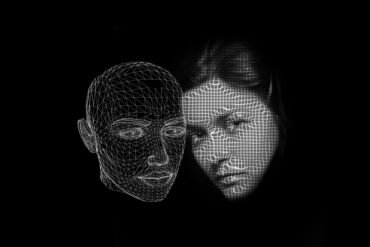Dealing with Vertigo: Causes and Management Tips

Table of Contents
What is Vertigo?
Vertigo is a type of dizziness characterized by a spinning or whirling sensation. It is often accompanied by other symptoms such as nausea, vomiting, sweating, and a loss of balance. Vertigo can be a temporary or chronic condition that significantly affects a person’s quality of life.
Vertigo occurs when there is a problem with the vestibular system, which is responsible for maintaining our balance and spatial orientation. The vestibular system includes the inner ear, the visual system, and the proprioceptive system (sensors in the muscles and joints). When these systems send conflicting signals to the brain, it can result in the sensation of vertigo.
There are several common causes of vertigo:
- Benign paroxysmal positional vertigo (BPPV): This is the most common cause of vertigo and occurs when tiny calcium crystals in the inner ear become dislodged and move into the wrong part of the ear.
- Meniere’s disease: This chronic inner ear condition causes episodes of vertigo, hearing loss, tinnitus (ringing in the ears), and a feeling of fullness in the affected ear.
- Vestibular migraine: Migraine attacks can sometimes be accompanied by vertigo, making it difficult to distinguish between a vestibular migraine and other causes of vertigo.
- Labyrinthitis: This is an infection or inflammation of the inner ear, often caused by a viral infection, and can result in vertigo.
- Medication side effects: Certain medications, such as those used to treat high blood pressure or anxiety, can cause dizziness and vertigo as side effects.
Managing vertigo depends on its underlying cause. Treatment options may include:
- Vestibular rehabilitation therapy (VRT): This is a specialized form of physical therapy that focuses on exercises to help improve balance and reduce vertigo symptoms.
- Medications: Medications such as antihistamines, anti-nausea drugs, and vestibular suppressants may be prescribed to alleviate vertigo symptoms.
- Canalith repositioning maneuvers: These maneuvers, such as the Epley maneuver, can help reposition the displaced calcium crystals in the inner ear and relieve symptoms of BPPV.
- Lifestyle changes: Avoiding triggers such as certain foods, stress, or excessive caffeine intake can help manage vertigo symptoms.
It is important to consult a healthcare professional if you experience recurring or severe episodes of vertigo. They can help diagnose the underlying cause and recommend appropriate treatment options to manage the condition effectively.
Common Causes of Vertigo
Vertigo is a symptom characterized by a spinning or whirling sensation, often accompanied by dizziness and a loss of balance. It can have various causes, some of which are more common than others. Understanding the underlying causes can help in managing and treating vertigo effectively. Here are some of the most common causes:
- Benign Paroxysmal Positional Vertigo (BPPV): This is the most common cause of vertigo. It occurs when calcium crystals in the inner ear become dislodged and move into the fluid-filled canals responsible for balance. Certain head movements trigger brief episodes of intense vertigo.
- Ménière’s Disease: This chronic condition affects the inner ear and leads to recurrent episodes of vertigo, hearing loss, tinnitus (ringing in the ears), and a feeling of fullness in the affected ear. The exact cause of Ménière’s disease is unknown, but it is believed to involve fluid buildup in the inner ear.
- Vestibular Migraine: Migraine headaches can sometimes cause vertigo as a symptom. Vestibular migraines are characterized by vertigo or dizziness, often accompanied by headache and sensitivity to light and sound.
- Labyrinthitis: This is an inflammation of the inner ear, usually caused by a viral infection. It can lead to vertigo, hearing loss, and ringing in the ears. Labyrinthitis often follows a respiratory infection, such as a cold or the flu.
- Medication Side Effects: Certain medications, such as those used to treat high blood pressure or anxiety, can cause dizziness and vertigo as side effects. If you suspect your medication is causing vertigo, consult your healthcare provider.
- Head or Neck Injury: Trauma to the head or neck can damage the inner ear or affect the vestibular system, leading to vertigo. Concussions, whiplash, and other injuries should be evaluated by a medical professional.
It is important to remember that these are just some of the common causes of vertigo, and there are other less common causes as well. If you experience frequent or persistent vertigo episodes, it is advisable to seek medical attention for a proper diagnosis and appropriate treatment. Understanding the cause of your vertigo is crucial for effective management and improving your quality of life.
Understanding the Symptoms
Vertigo is a condition characterized by a spinning sensation or a feeling of dizziness. It is often accompanied by other symptoms such as nausea, vomiting, sweating, and difficulty in maintaining balance. Understanding the symptoms associated with vertigo can help in identifying the condition and seeking appropriate management strategies.
Here are some common symptoms of vertigo:
- Dizziness: A feeling of lightheadedness or unsteadiness.
- Spinning Sensation: The perception that the surrounding environment or oneself is moving or spinning.
- Nausea and Vomiting: A sensation of queasiness and the urge to vomit.
- Sweating: Excessive perspiration, often associated with dizziness.
- Loss of Balance: Difficulty in maintaining stability and coordination.
- Tinnitus: Ringing or buzzing in the ears.
- Hearing Loss: Partial or complete loss of hearing, which may or may not be temporary.
It is important to note that these symptoms can vary in intensity and duration depending on the underlying causes of vertigo. Some individuals may experience mild symptoms that come and go, while others may have severe and persistent symptoms.
Vertigo can be caused by various factors, including:
- Inner Ear Problems: Conditions such as benign paroxysmal positional vertigo (BPPV), Meniere’s disease, and vestibular neuritis can affect the inner ear and lead to vertigo.
- Migraine: Certain types of migraines can cause vertigo as a symptom.
- Head Injuries: Traumatic brain injuries or concussions can disrupt the normal functioning of the inner ear or the brain, resulting in vertigo.
- Medications: Some medications, such as certain antibiotics and anticonvulsants, can have side effects that include vertigo.
- Other Medical Conditions: Vertigo can also be associated with conditions like stroke, multiple sclerosis, and tumors, although these cases are less common.
If you experience any of the mentioned symptoms, it is important to consult a healthcare professional for a proper diagnosis. They can identify the underlying cause of your vertigo and recommend appropriate management strategies.
Treatment options for vertigo may include medication, physical therapy exercises, vestibular rehabilitation, and lifestyle modifications. The management approach will depend on the cause and severity of the condition.
Overall, understanding the symptoms associated with vertigo can empower individuals to seek timely medical attention and adopt strategies to manage the condition effectively.
Effective Management Strategies
When it comes to dealing with vertigo, there are various management strategies that can help alleviate symptoms and improve overall quality of life. Here are some effective tips:
- Identify and address the underlying cause: It is important to determine the root cause of your vertigo episodes. This can be done through medical evaluation and tests. Once the cause is identified, appropriate treatment can be prescribed.
- Medication: In some cases, medication may be prescribed to help manage vertigo symptoms. These can include anti-vertigo medications, anti-nausea medications, or vestibular suppressants. It is essential to follow the prescribed dosage and consult with a healthcare professional.
- Vestibular rehabilitation therapy (VRT): VRT is a specialized form of therapy that aims to retrain the brain to adapt to the vestibular system’s dysfunction. This therapy includes specific exercises and maneuvers that can help reduce vertigo symptoms and improve balance.
- Lifestyle modifications: Certain lifestyle changes can make a significant difference in managing vertigo. These include avoiding triggers like caffeine, alcohol, and tobacco, maintaining a consistent sleep schedule, and reducing stress levels through relaxation techniques.
- Balance training exercises: Engaging in exercises that improve balance and coordination can be beneficial for individuals with vertigo. Activities such as yoga, tai chi, and gentle stretching can help strengthen muscles and improve stability.
- Assistive devices: Depending on the severity of vertigo symptoms, assistive devices like canes or walkers may be recommended to provide additional support and reduce the risk of falls.
It is important to note that management strategies may vary depending on the specific cause and severity of vertigo. Consulting with a healthcare professional is crucial to develop an individualized treatment plan that suits your needs. With the right management strategies in place, it is possible to effectively cope with vertigo and enhance your overall well-being.
Seeking Professional Help
When it comes to managing vertigo, sometimes seeking professional help is necessary. A healthcare professional can provide an accurate diagnosis, determine the underlying causes of your vertigo, and offer appropriate treatment options. Here are a few reasons why consulting a professional may be beneficial:
- Accurate Diagnosis: Vertigo can have various causes, and accurately identifying the specific cause is crucial for effective management. A healthcare professional will conduct a thorough evaluation, including a review of your medical history, physical examination, and potentially ordering additional tests, such as blood tests, imaging scans, or vestibular function tests. With a precise diagnosis, you can receive targeted treatment.
- Treatment Options: A professional can offer a range of treatment options tailored to your specific needs. Medications, such as vestibular suppressants or anti-nausea drugs, may be prescribed to alleviate symptoms and manage underlying conditions. Additionally, physical therapy exercises, such as vestibular rehabilitation, can help improve balance and reduce vertigo episodes. In some cases, surgical interventions or other specialized treatments may be recommended.
- Expert Guidance: Dealing with vertigo can be challenging and overwhelming. A healthcare professional can provide valuable guidance and support throughout your journey. They can help you understand your condition, teach you coping mechanisms to manage vertigo episodes, and offer lifestyle modifications to minimize triggers. Regular follow-up appointments allow for adjustments to your treatment plan based on your progress or changing symptoms.
- Identifying Underlying Conditions: Vertigo can be a symptom of an underlying health condition. Consulting a professional can help identify any potential serious or chronic conditions that may be causing your vertigo. Addressing these underlying issues is essential for long-term management and overall well-being.
Remember, seeking professional help does not mean you have failed in managing your vertigo on your own. It is a proactive step towards finding the most effective treatment options and improving your quality of life.


























